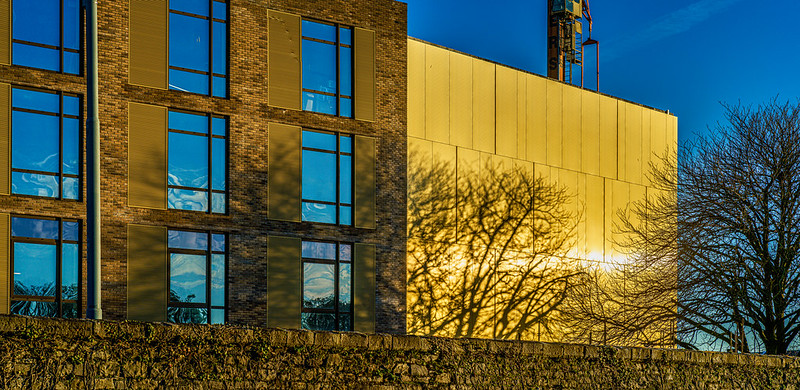
Positive drilling results
Earlier this year, a 1-kilometer deep borehole was drilled in the grounds of the Grangegorman campus of TU Dublin. A temperature of 38.5 °C was measured at 1 kilometer depth. This corresponds to a geothermal gradient that is significantly higher than the 21°C per kilometer average for Ireland.
Dr Siobhán Power of Geological Survey Ireland stated this is a very good result, and that it is worthwhile to drill further and assess how much heat is available. Dr Power had already expected a high gradient in the study area with her knowledge of the deep limestone formation and known structures in the area, but the results were still better than she had expected.
Mark Geraghty, Environment and Sustainability Manager at TU Dublin, stated that the results have paved the way for plans to drill to 2.5 kilometers depth. “If we drill down and find water, that would be the holy grail because we could simply pump the water up to heat and run our own systems and manage to decarbonise our heating completely,” he said.
“If we don’t find water, we could still use a closed system whereby a liquid would be put down through our boreholes to gather the heat at a depth of 2km and that liquid would then come back up to heat our boilers. It is the perfect indigenous kind of renewable energy we are looking for on this Island,” Geraghty further explained.
An existing district heating system
TU Dublin, like all public sector bodies, is tasked to reduce their greenhouse gas emission by 2023. A factor that makes geothermal particularly appealing to attain this goal is the fact that the university already has its own district heating system. This is currently supplied by a modern and highly efficient gas-powered setup.
Despite the system’s efficiency, the gas for heating still accounts for about half of all the greenhouse gas emissions in the campus. The potential of fully decarbonizing the heating system, thus achieving the reductions emissions target in one fell swoop, is enough incentive to further explore the potential of geothermal.
Funding and policy support
TU Dublin says that around EUR14 million in upfront costs would bee needed to install the geothermal harvesting system. This is more expensive than a modern gas powered heating system, although the investment will pay off in the subsequent years as geothermal provides abundant, inexpensive, and low-emission heating.
The Geological Survey of Ireland also wants EUR4 million to 6 million to conduct a detailed geological seismic survey of the entire Dublin area to help better identify prospective geothermal sites.
With huge funding needs, support from policymakers will undoubtedly be necessary for geothermal projects in Ireland to progress. About a month ago, the Government of Ireland published the document “Policy Statement on Geothermal Energy for a Circular Economy.” Effective for five years, the policy statement defines the approach to regulating shallow and deep geothermal energy and a strategy to promote Ireland’s geothermal resources.